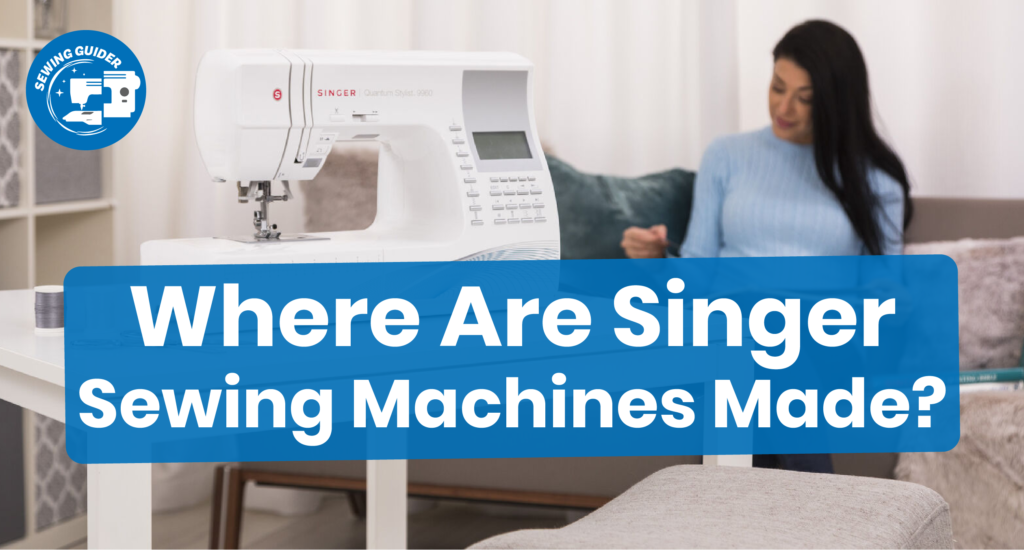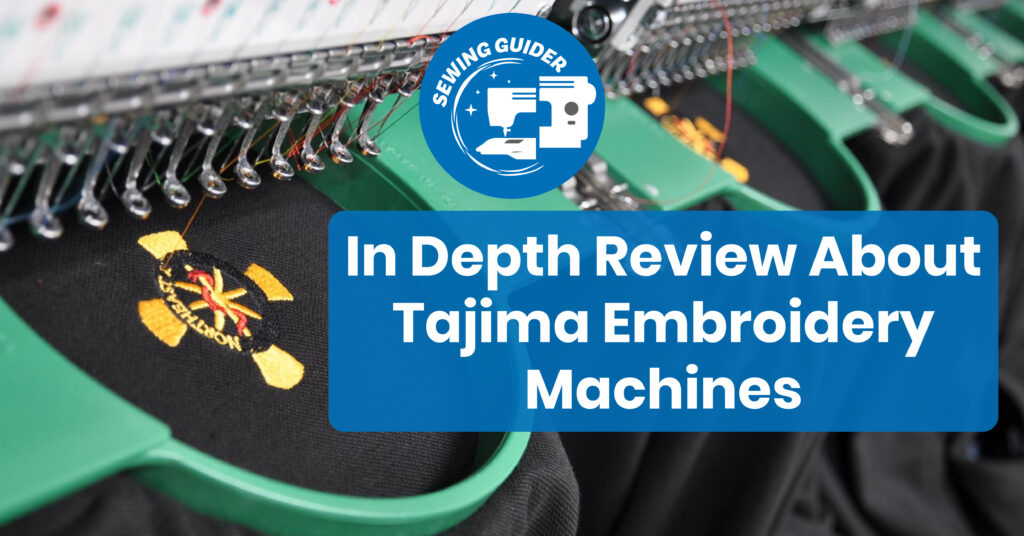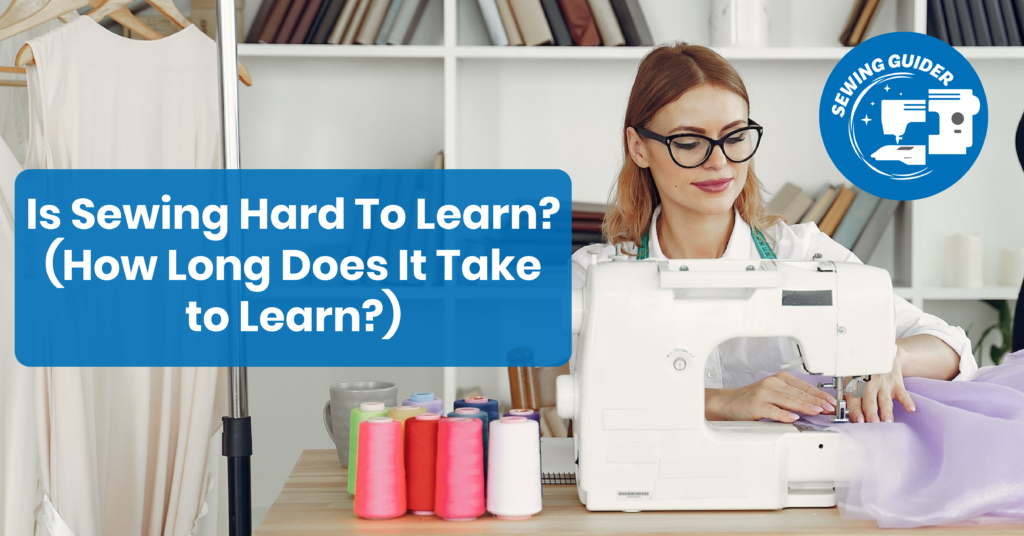Singer sewing machines were instrumental in democratizing sewing and making it available to people worldwide. Singer’s narrative, from its modest origins in the middle of the 19th century to its current prominence as an iconic brand, is a monument to creativity, quality, and enduring workmanship. When it comes to sewing machines, Singer is a name that stands out. Singer has been around for nearly a century, so naturally, people associate the term with superior craftsmanship, cutting-edge design, and dependability.
Nonetheless, a common question is, “Where are Singer sewing machines made?” Here, you’ll travel the world with us as we explore the history and production of Singer sewing machines. Come along as we expose the ingenuity and skill of making these cherished gadgets.
The Birth of Singer:
The brilliant inventor and businessman Isaac Merritt Singer founded the Singer in 1851. His invention was the first practical sewing machine capable of continuous stitching. Because of this innovation, stitching went from being a time-consuming and difficult chore to one that could be completed quickly and easily. Singer’s invention paved the way for modern sewing machines with vertical needles, presser feet, and up-and-down needle motion.
A Legacy of Excellence:
Singer sewing machines have been trusted for decades because of the company’s unwavering dedication to producing only the finest quality machinery. Founded in 1851, the Singer Sewing Machine Company is known worldwide for its high-quality products, including cutting-edge technology and meticulous craftsmanship.
Historical Manufacturing Locations:
Singer sewing machines were manufactured initially solely in the United States. The company’s first facility was constructed in New York when larger-scale production of sewing machines began. As demand grew, other manufacturing facilities were built in various areas across the United States.
Singer developed its manufacturing activities overseas in the late nineteenth century. Singer’s global footprint began with the establishment of plants in Scotland, Canada, Germany, and Russia. These plants aided in meeting the expanding demand for Singer sewing machines worldwide.
The Rise to Prominence:
The Singer faced patent problems and market competition when introducing his sewing machine. On the other hand, Singer developed a significant position in the sewing machine industry through savvy commercial relationships, innovative marketing strategies, and advancements in his machine’s design. Introducing installment sales and trade-in options made sewing machines more affordable and accessible to a broader range of consumers.
Large-Scale production:
Singer constructed production facilities in various locales to accommodate the increased demand for their sewing machines. The company’s first plant was created in New York, and other factories were built in Scotland, Canada, Germany, Russia, and other nations. Singer’s global development enabled the business to serve a bigger market and promote its brand as a symbol of quality and dependability.
Advancements & Innovations:
Singer has continued to offer new features and technology to its sewing machines over the years. The Singer Vibrating Shuttle, launched in 1889, allowed considerably smoother and quieter operation. In the early twentieth century, the firm pioneered electric sewing machines, eliminating the need for manual foot or hand-powered functions. Subsequent innovations included zigzag stitching, computerized controls, and automatic threading systems, making sewing more versatile and user-friendly.
Where Are Singer Sewing Machines Manufactured Now?
Singer sewing machines are currently manufactured in several places across the world. The company has deliberately located manufacturing plants in areas with superior manufacturing capabilities, skilled labor, and favorable business environments. Singer sewing machines are currently manufactured in the following locations:
China:
China has emerged as a significant sewing machine production hub. Because of the country’s robust manufacturing infrastructure, technological breakthroughs, and skilled labor population, it is an attractive place for large-scale production. Many Singer sewing machines sold around the world are made in China.
Vietnam:
Singer’s manufacturing operations have also expanded to Vietnam. The country’s growing textile and garment industry, favorable trade rules, and trained labor make it an attractive location for sewing machine production. Vietnam-based manufacturing help meet the demand for Singer sewing machines in various markets.
Brazil:
Singer has established production plants in Brazil to serve the South American market. The presence of these factories guarantees that Singer sewing machines are more easily accessible in the region. Furthermore, local manufacturing benefits the local economy and offers job prospects.
Other nations:
In addition to China, Vietnam, and Brazil, Singer sewing machines may be manufactured in other nations to meet regional demands. Manufacturing facilities may be located in India, Taiwan, Thailand, etc.
It should be noted that Singer’s manufacturing locations may evolve and alter over time to react to market dynamics and maximize production efficiency. To ensure that every Singer sewing machine lives up to the brand’s reputation for excellence and dependability, the firm maintains high-quality control standards across all its manufacturing locations.
It is recommended that while purchasing a Singer sewing machine, you refer to the specific model’s product information or check the official Singer website to confirm the current manufacturing location.
FAQ about Where Are Singer Sewing Machines Made?
Where are Singer sewing machines made?
Singer sewing machines are currently manufactured in various countries around the world. The primary manufacturing locations include China, Vietnam, and Brazil. However, it’s important to note that Singer may also have manufacturing facilities in other countries to cater to specific regional demands.
Why are Singer sewing machines manufactured in different countries?
Singer strategically establishes manufacturing facilities in other countries to optimize production efficiency and meet the demands of various markets. Factors such as advanced production capabilities, skilled labor, favorable business environments, and regional market dynamics influence the selection of manufacturing locations.
Are Singer sewing machines made in the United States?
While Singer sewing machines were initially manufactured in the United States, the majority of Singer sewing machines available today are produced in countries like China, Vietnam, and Brazil. Singer expanded its manufacturing operations internationally to better serve its global customer base.
Are Singer sewing machines manufactured with the same quality standards in all locations?
Yes, Singer maintains strict quality control standards across all its manufacturing locations. Every Singer sewing machine undergoes rigorous testing and inspection to ensure it meets the brand’s high-quality standards before being made available to consumers.
Does the manufacturing location affect the quality of Singer sewing machines?
The manufacturing location does not directly impact the quality of Singer sewing machines. Singer upholds consistent quality standards across all its manufacturing facilities, ensuring that the machines meet the brand’s reputation for excellence and reliability.
How can I determine where a specific Singer sewing machine was manufactured?
To select the manufacturing location of a particular Singer sewing machine model, it is recommended to refer to the product’s documentation, packaging, or labeling. Additionally, you can consult the official Singer website or contact Singer’s customer support for accurate information regarding the manufacturing location of a particular model.
Are there any differences between Singer sewing machines manufactured in different countries?
Singer strives to maintain consistent standards and features across its sewing machine models, regardless of the manufacturing location. However, minor variations may exist due to regional market preferences or specific model configurations. For accurate information, it’s advisable to review the product specifications and features of the particular Singer sewing machine model you are interested in.
Conclusion:
Singer sewing machines have gone global. Singer has been committed to quality from its beginnings in the US to its current manufacture in China, Vietnam, Brazil, and other nations. The Singer inspires creativity and empowers sewing enthusiasts worldwide by combining innovation, craftsmanship, and global manufacturing.
Singer sewing machines are trusted by professionals and amateurs alike. When you sit down at your sewing table, you can be sure that your Singer machine was constructed accurately and cared for, no matter where it was made.




